Clea Simon's Blog, page 27
November 4, 2019
In #MeToo era, we don’t need to make nice
As many of my writer friends know, I’ve been working on a darker-than-my-usual crime novel that deals with, among other things, the aftermath of violence, the funny tricks denial can play on memory, and how a single act can permanently alter the trajectory of a woman’s life. PTSD and recovery, particularly from sexual assault, are important topics for me – they are also very complex in a way that I don’t think are always understood. That’s one reason I wrote this op-ed, which ran in today’s Boston Globe, (though the other will be clear as soon as you start reading) and why I’ll keep writing about these topics, even after my mystery-in-process is published.
I hope you’ll take this journey with me. There is light at the end of the tunnel, but we need to face the darkness first.
Thanks.
Clea
(The Globe op-ed may be behind a subscription paywall. I encourage everyone to subscribe to all your local papers! But in this case… )
OPINION | CLEA SIMON
In #MeToo era, we don’t need to make nice
By Clea Simon
As a victim of sexual assault, my first impulse is to make nice. Some of that is the survival instinct: Don’t invite any further violence. Slip away and disappear.
But recently, I learned again that making nice has its own price. Rage, like grief, has its own season, and recovery cannot be rushed.
I learned — relearned — this lesson when I received an e-mail from a college classmate who was the roommate of the man who raped me our freshman year. He was writing after 40 years of silence with an offer to talk. His roommate had told him “distressing” things about a “night” with me at the time, he said. “I regret never having discussed it before,” he wrote.
To say this e-mail shook me would be an understatement. Although I’ve healed considerably through therapy, and I’ve written extensively in both fiction and nonfiction about how sexual trauma can play out in a woman’s life, this awakened something. As other survivors know, we often cling a little bit to denial: It wasn’t that bad. We had some role, and therefore some control. Maybe it didn’t happen at all. This e-mail was proof, once again, that it did.
Several friends advised me not to respond. But once the strange vertigo of denial passed, I realized I had questions. The first was for him: Why now? The answer boiled down to his awareness of #MeToo and a reappraisal of his own past.
I then moved onto the specific queries that had long bothered me. No, his roommate didn’t use drugs, just a bottle of over-proof rum, which he kept solely to push on vulnerable women. Yes, there were other women. No, he was never prosecuted, as far as his former roommate knew. These answers were disturbing but ultimately useful. Old questions answered. Throughout, he kept reassuring me that he didn’t participate and that he didn’t like this roommate.
But his e-mails also signified that he still didn’t get it. For one, even though I called what happened rape, he didn’t. Instead, he talked about how his roommate would use alcohol “to try to have sex with women.” At one point, he said he thought I might want to “let bygones be bygones.” He also noted that I never reached out to talk to him, as if contact with someone who lived with the man who assaulted me was something I would seek.
He also was not, I came to believe, candid about what he really wanted. Absolution. Points for being a good guy, all these years later.
That’s when I realized why my friends had cautioned me about replying. That this was about him, not me, and by responding to his prompt, I was giving him something. I was entering into some kind of cooperative agreement or relationship — on his terms and on his timetable.
And I don’t have to. I don’t owe him any particular reaction — or a response at all. In her memoir, “Know My Name,” Chanel Miller talks about reclaiming power after being cast purely as the victim of assault. For me, this is part of that reclamation.
This e-mail out of the blue shook me. It sparked a lot of feelings, including anger. I’m trying to be OK with that. What I’m not OK with is for anyone else — particularly a man who was at least passively complicit — seeking reconciliation or some resolution now that he wants one.
Too often, making nice made us vulnerable to abuse. We didn’t protest, we played along. I’m now trying to fight that impulse. I’m pushing back. My anger is my own, and I — we — will let go of it when our time is right.
Clea Simon’s most recent novel is “A Spell of Murder.” She can be reached at www.CleaSimon.com .
If anyone wants to reach me, I’m reachable via this website. I am not going to read the comments.
Thanks
November 3, 2019
Five Questions with Nina MacLaughlin
I first met Nina when she was at the Boston Phoenix, and she quickly became a go-to writer. You know, the ones whose stories you read as soon as you spot the byline – no matter what the subject was, even when it was “100 Unsexiest Men.” When she quit and I’d heard she became a carpenter, I remember thinking, “yeah, journalism – or at least the Phoenix – will do that to you.” (Full disclosure, I quit writing for a year post-Phoenix too. Or almost a year…) When that “time off” became the brilliant Hammer Head: The Making of a Carpenter, the world made sense again. And now Nina is reinterpreting Ovid through the eyes of the female characters involved. Perfect, huh? Cannot wait for this book, which will be out on Saturday.
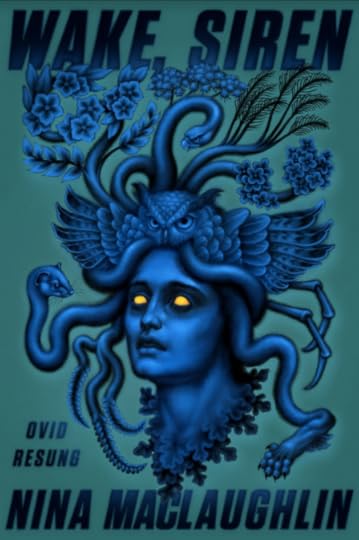
How does a book start for you?
I’ve only written two, and they’ve each begun in very different ways. With Wake, Siren, it came out of reading through Ovid’s Metamorphoses and wanting to get my writing muscles back in shape after a long season of carpentry. I decided to rewrite one of the stories from another perspective. It felt good. I did another, another, and then, quickly, there was a book. If there’s something consistent in the starts to projects for me, it’s the paying attention to the moment when that glittery electricity in the mind lights up that says yes, go, follow this, see where it goes.
Who in your latest book has surprised you most–and why?
Wake, Siren is made up of stories each told by a different voice, almost a series of monologues. I found it was less one particular voice that surprised me, though did shock me, but more the sound of them all together, the accumulation, the multi-sonic chorus of them and how they sounded all together.
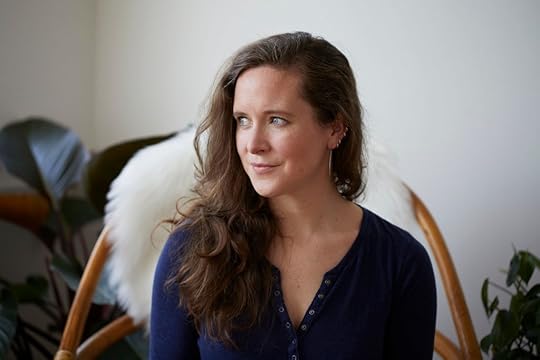
When and where is your latest book set and is there a story behind the setting?
Wake, Siren re-tells Ovid’s Metamorphoses from the perspective of the female figures who are transformed. The time and place varies throughout the book. A rock club that might have some resemblance to one here in Cambridge, a mythic seaside cliff, in caves, forests, by sacred pools, in fields, in underworlds, and the sky.
What are you working on now?
I’m in the beginning stages of research for a new book project. I’m doing some final edits on a book of essays on the summer solstice that Black Sparrow is publishing next spring which originally appeared on the Paris Review Daily. I’m writing my weekly column on New England literary news for the Boston Globe, and doing the work involved with the lead-up to publication. After a lull, things are starting to feel quite full again. I miss being full sunk into a big project, but trust that will happen again soon.
What question should I have asked but didn’t?
Among the many kinds of writer you are, Clea, one of them I see you as is music writer, rock critic. So maybe, do you listen to music when you write, if yes, what? And I’d answer: normally no! But with this book, I kept atmospheric Brian Eno in my headphones the entire time.
I love it! Thank you, Nina. May have to queue up the Eno as I read Wake Siren…
Nina MacLaughlin is the author of Wake, Siren: Ovid Resung, a re-telling of Ovid’s Metamorphoses told from the perspective of the female figures transformed, published by FSG/FSG Originals in November, 2019. Her first book was the acclaimed memoir Hammer Head: The Making of a Carpenter. Formerly an editor at the Boston Phoenix, she worked for nine years as a carpenter, and is now a books columnist for the Boston Globe. Her work has appeared on or in The Paris Review Daily, The Believer, American Short Fiction, the Los Angeles Review of Books, the Wall Street Journal, Meatpaper, and elsewhere. She carves spoons and lives in Cambridge, Massachusetts.
October 30, 2019
Bouchercon!
By the time you read this, I’ll be in Dallas. I’ve got two events today at Bouchercon, the World Mystery Convention, and more to come. This is a huge convention that’s focused on the readers and fans (though we authors always have a blast as well), now in its 50th year. Please, if you’re attending, grab me to say hi or share a beverage. I want to meet you!
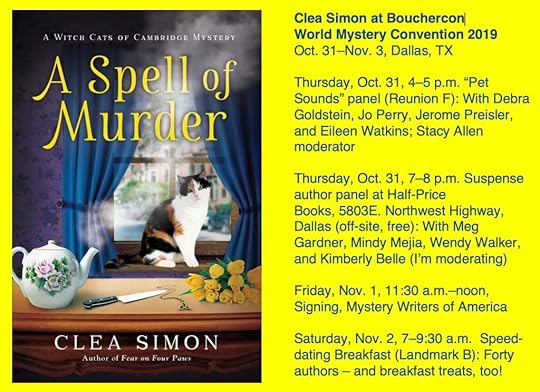
“I loved everything about this book…”
“I loved everything about this book. The characters were quirky, the story made me laugh out loud and I loved the sister cats with magical powers. After finishing book two, I immediately purchased book one so I could start from the beginning. “
The advance reviews for An Incantation of Cats are beginning to come in. Just saw this on Goodreads, and it made me so happy! The review continues:
“This is perfect for those who love paranormal cozies and love cats. I can’t wait for book three to come out! “
Thank you!

October 27, 2019
Five Questions with Dharma Kelleher
There’s a lot of talk in the crime fiction community these days about “other voices.” Basically, that means hearing from people whose stories don’t necessarily follow the usual template – and it can focus more on our differences (race, gender, sexuality, religions, culture, whatever…). But Dharma Kelleher explains, there is more to each of us than any single factor. And a good story always takes us into another’s life. Here to tell us more – Dharma!
How does a book start for you?
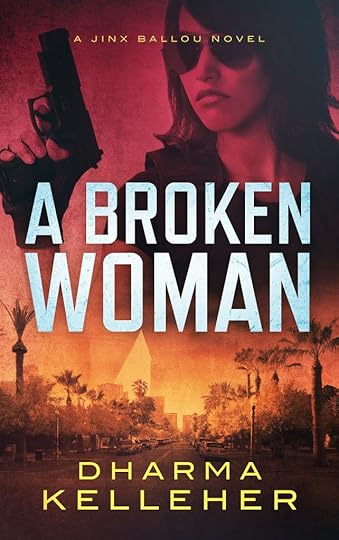
Sometimes I start with a title or a very broad idea.
With my latest novel, A BROKEN WOMAN, I was inspired by a line from Hannah Gadsby’s show Nannette. She said, “There is nothing stronger than a broken woman who has rebuilt herself.”
That idea really resonated with me. And it really fit with where I wanted to take this Jinx Ballou Bounty Hunter book, because in the previous novel, Jinx ends up pretty broken. Her whole world has collapsed. So I wanted to create sort of a redemption story, an opportunity for her to figure out how to put the pieces of her life back together and to be stronger than who she was before.
Who in your latest book has surprised you most – and why?
I would have to say my protagonist, Jinx Ballou. She’s a bounty hunter who almost always brings her fugitive back into custody. She doesn’t normally care whether her fugitive is guilty of the crime they’ve been charged with or not. Her job is to bring them back in. But in A BROKEN WOMAN, she is forced to reassess her approach.
When and/or where is your latest book set and is there a story behind that setting?
[image error]
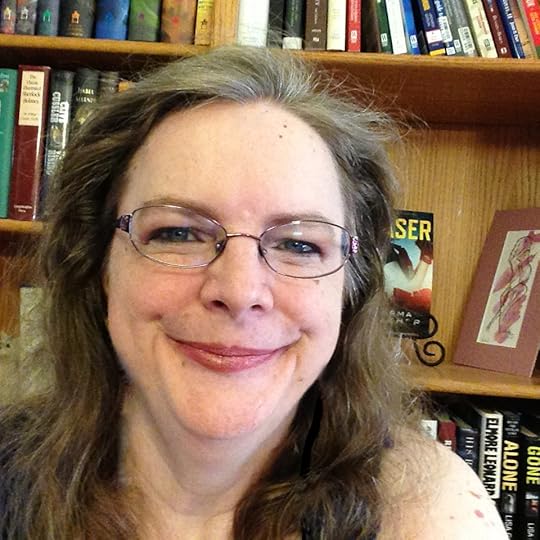
My books always take place in modern times and almost always somewhere in Arizona, which is where I’ve lived for half my life.
Most of A BROKEN WOMAN is set in the urban desert sprawl of Phoenix. But a significant part of the story is set further north in Cortes County, a fictional county in Arizona’s high desert. This is where my Shea Stevens outlaw biker series takes place. And Shea and her women’s biker gang have a major role in this story. I like Cortes County because it has so many environments. Rugged mountains, rolling hills, ponderosa forests, ghost towns, and a college town. It’s a fun sandbox to play in.
What are you working on now?
I’m writing the third book in the Shea Stevens Outlaw Biker series, currently titled WOMEN WITH WINGS. Shea and her women’s motorcycle club are asked to protect a woman from a powerful politician determined not to let a certain secret get out. Meanwhile, the motorcycle club is dealing with an old enemy that could turn Cortes County into a bloody battlefield.
Which question didn’t I ask you that I should have?
Why did you choose to make Jinx Ballou transgender?
For a number of reasons. For starters, I’m transgender, having transition more than a quarter century ago. Most books with a trans main character are either coming out stories, transition stories, romances, or erotica. But there is so much more to life as a transgender person than coming out, transitioning, falling in love, and having sex.
I’ve always been a fan of crime fiction and I wanted to write a series where the main character is trans like me, but where the focus of the story isn’t about her being trans. It’s just one of the many things that makes her unique. The focus of the stories are about her work as a bounty hunter, told from a trans perspective.
And readers don’t need to be transgender in order to enjoy the story any more than one has to be an eleven-year-old boy in England to enjoy Harry Potter. That’s the magic of story. We get to experience new things and new ways of looking at the world.
Dharma Kelleher writes gritty crime fiction with a feminist kick and is one of the only openly transgender voices in the genre. She is the author of the Jinx Ballou Bounty Hunter series and the Shea Stevens Outlaw Biker series. Her work has also appeared in anthologies and on Shotgun Honey. She also hosts The Gritty Gritty Podcast, highlighting #OwnVoices in crime fiction.She is a former journalist and a member of Sisters in Crime, the International Thriller Writers, and the Alliance of Independent Authors. She lives in Arizona with her wife and three feline overlords. Learn more about Dharma and her work at https://dharmakelleher.com .
October 21, 2019
PW loves “Incantation”!
“In Simon’s entertaining sequel to 2018’s A Spell of Murder… Becca’s cats, each with a distinctive personality, use their individual magical skills in their efforts to solve the case and keep Becca safe. Fans of talking cat cozies will have fun.” – Publishers Weekly
An Incantation of Cats: A Witch Cats of Cambridge Mystery

Clea Simon. Polis, $26 (288p) ISBN 978-1-947993-80-8
In Simon’s entertaining sequel to 2018’s A Spell of Murder, Becca Colwin has already declared herself a witch detective to her friends and coven. With the help of her three cats, known as familiars in the Wiccan world, Becca sets out to discover who’s trying to kill her client Gaia Linquist, a clerk at the Wiccan boutique in Cambridge, Mass. Gaia suspects the culprit may be her boss, Margaret Cross, who believes Gaia’s having an affair with Margaret’s husband, Frank. But when Frank ends up dead, both Gaia and Margaret become suspects in his possible murder, until someone tries to kill Gaia. Gaia thinks her boyfriend, Tiger, is assisting Becca as she combs the streets of Cambridge for clues. Then the police tell Gaia that Tiger claims he has never met Becca, and Gaia realizes that he’s not who he says he is. Becca’s cats, each with a distinctive personality, use their individual magical skills in their efforts to solve the case and keep Becca safe. Fans of talking cat cozies will have fun.
October 20, 2019
Five Questions with Paula Munier
I first knew Paula as a panelist – a wise and funny woman who would show up at conferences and always had something useful to say. I’d see her name on a schedule and I’d know that wherever she was, that was going to be good. I then started to hear about her agenting – she represents several friends, authors I admire. And when I’d see her at events, I’d hear about her love for dogs and music and New Orleans. No surprise, then, when her first book A Borrowing of Bones came out, it was as much fun as you’d expect (with a dog, of course). I’m thrilled to host her here today following the release of her second thriller, Blind Search.
How does a book start for you?
I usually start with an image or an idea. In A BORROWING OF BONES, I started with the image of a soldier and a sniffer dog home from the war in Afghanistan, walking off their sorrow in the Vermont woods. I knew they’d have to find something in those woods that would give them a new mission.
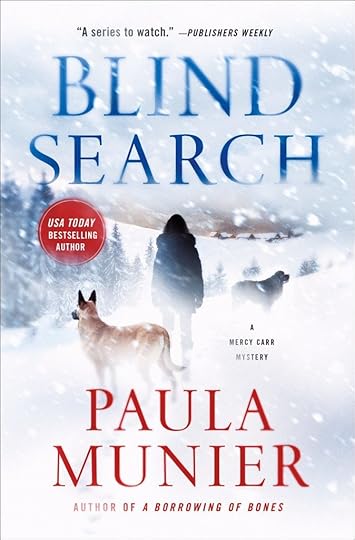
In the new book BLIND SEARCH, I started with a story I’d read in the newspaper about a boy with autism who’d wandered off into the Vermont woods and gotten lost. He was rescued safe and sound, but the writer in me thought: What if a boy with autism got lost in the woods and witnessed a murder? Mercy and Elvis would have to save him…and I was off and running
Who in your latest book has surprised you most – and why?
The dogs always surprise me. With each book, I learn more about the amazing things dogs can do for us. Every time I think I’ve researched every possible way they help us lead better lives, I find something else. In BLIND SEARCH, I get to write about the service dogs working with people with autism.
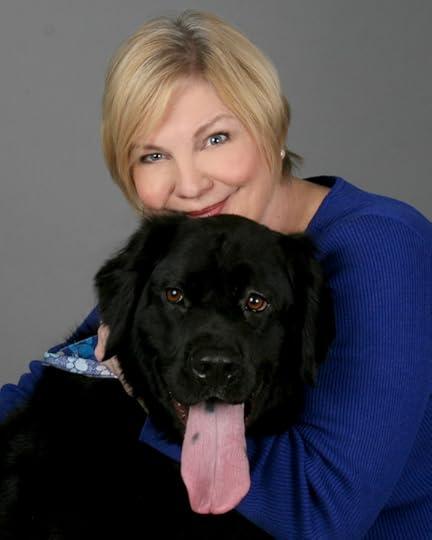
When and/or where is your latest book set and is there a story behind that setting?
The series is set in the Green Mountains of Vermont. In the first book, it’s summer—but in this book, it’s autumn. Hunting season, perhaps the very best season for murder.
What are you working on now?
I’m working on book three of the Mercy Carr series, working title THE HIDING PLACE. Here’s the elevator pitch: When the man who killed her grandfather escapes from prison, Mercy and Elvis must keep her grandmother safe from his vengeance—and unravel the bizarre mystery behind her grandfather’s untimely death.
Which question didn’t I ask you that I should have?
Are there any bears in BLIND SEARCH?
Now that you mention it…. We moved to the middle of Nowhere New England (as my son complains) while I was writing this book—and we have a lot of bears in this neck of the woods. Low and behold there’s a big black bear in the story who becomes very important to Mercy. I didn’t know that was going to happen—but now I love that bear. And by extension, all bears.
Paula Munier is a literary agent and the USA TODAY bestselling author of the Mercy Carr mysteries. A Borrowing of Bones, the first in the series, was nominated for the Mary Higgins Clark Award. The second, Blind Search, pubs in November. She’s written three popular books on writing: Plot Perfect, The Writer’s Guide to Beginnings, and Writing with Quiet Hands, as well as Fixing Freddie and Happier Every Day. For more: https://paulamunier.com/(
October 15, 2019
Calling all critics…
Book bloggers and reviewers! The ARC (advanced reading copy) of AN INCANTATION OF CATS is now available on NetGalley. Please, be aware – this is (as the cover notes) the UNCORRECTED copy. I’m going through it now and making all the copy editor’s corrections, such as changing the millions of “as if,” “glance,” and “nod” repetitions to make the language livelier. But as long a you are willing to give this rough rough version a glance for your blog or review site, we’d love you to take a look!
An Incantation of Cats on NetGalley.
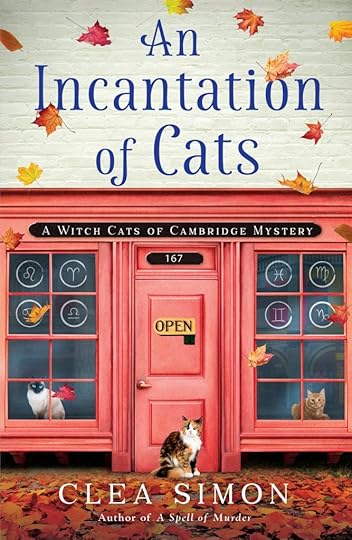
October 13, 2019
Five Questions with Lisa Unger!
OMG, people! Lisa Unger!
My introduction to this deservedly best-selling author was through her short story, “The Twenty.” A giveaway at last year’s Bouchercon, it appeared in a little booklet that I read – and re-read and re-read, first for the sheer joy of it and then to dissect. I’ve since moved onto her novels, including the new The Stranger Inside. Whichever you start with, you’ll be in good hands. The woman is a master. (And read to the end to find out how to get a free short story.)
This fall, I was lucky enough to meet Lisa, when she came to Boston for a book chat with local star Joe Finder (whose thrillers always please). Over pizza afterward, a bunch of us crime writers talked plotting, research, and what makes our characters tick. I’m thrilled that she agreed to answer my standard five questions here, as well:
How does a book start for you?
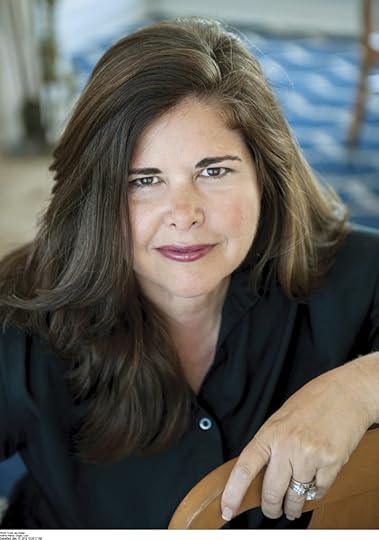
All novels start with a little zap of interest or fascination. It could come from anywhere — a line of poetry, a news story; in the case of BEAUTIFUL LIES it was a piece of junk mail. That usually leads me to a swath of research. And the best way I can describe it is if it all that — the zap, the research — connects with something that’s going on inside me, I’ll start to hear a voice or voices. And I follow those voices through the narrative.
Who in your latest book has surprised you most – and why?
I am always surprised — by my characters, by their stories. I write without an outline. I don’t know who is going to show up day-to-day or what they’re going to do. I certainly never know how my book is going to end. It’s fair to say that I’m daily surprised by the people living in my head and what they’re up to. In THE STRANGER INSIDE, there are multiple layers to both of my main characters Hank and Rain. I was surprised by their relationship, how deep it was, how unhealthy. And I was surprised by how their shared trauma drove them to such different places — and yet, in the end, how much alike they were.
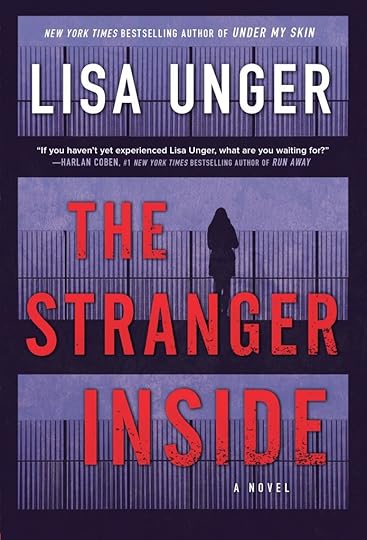
When and/or where is your latest book set and is there a story behind that setting?
Most of my books are set in the Northeast. Though I’ve lived in Florida for nearly twenty years, I grew up all over and spent much of my early life in New Jersey and New York. That’s the area I often return to in my fiction. Or some fictional version of that area — something suburban or rural, with a big city nearby that may or may not be named. My stories evolve in a place that’s apart, real but not real, and are often set in a fictional town called The Hollows. And even when a story is not set there, The Hollows is always trying to find its way in, or at least get a mention.
What are you working on now?
I’m entering the editorial phase on my next novel which will publish in Fall 2020. But I never talk about my books until they’re completely finished. So, I’ll have to keep you in suspense for a while!
Which question didn’t I ask you that I should have?
I’m heading out on the road for THE STRANGER INSIDE. I’ll be visiting some wonderful stores and libraries, talking with fantastic authors — Hank Phillippi Ryan, JT Ellison, Joe Finder, and Laura Lippman — and attending some excellent book conferences. So, maybe, where can readers find me? Visit www.lisaunger.com for all tour details — and free short story!
Lisa Unger is the New York Times and internationally bestselling author of seventeen novels, including the brand new THE STRANGER INSIDE. With millions of readers worldwide and novels published in twenty-six languages, Lisa Unger is widely regarded as a master of suspense. In 2019, she received two Edgar Award nominations, an honor held by only a few writers including Ruth Rendell and Agatha Christie. The Edgar-nominated Under My Skin is also a finalist for the prestigious Hammett Prize. And the original short story The Sleep Tight Motel is a #1 bestselling single.
Unger’s critically acclaimed books have been voted “Best of the Year” or top picks by the Today show, Good Morning America, Entertainment Weekly, Amazon, IndieBound and many others. Her writing has appeared in The New York Times, Wall Street Journal, NPR, and Travel+Leisure. She lives on the west coast of Florida with her family.
October 6, 2019
Five Questions with Marty Wingate
I first met Marty Wingate in person in New Orleans, where we skipped out on Bouchercon to enjoy the fabulous adult libations at the … Her latest, The Bodies in the Library, out tomorrow,
How does a book start for you?
I’m open to any kind of inspiration, whether it be a newspaper article about a man who had a rook as a pet when he was a boy (and thus, Every Trick in the Rook) or the story of yet another Roman ruin being discovered in London (The Garden Plot). I have a degree in drama, and loved finding a place to sprinkle in long-ago memories of A Midsummer Night’s Dreamsummer production into a garden murder mystery (Midsummer Mayhem).
Who in your latest book has surprised you most – and why?
Lady Georgiana Fowling surprised me, because she died four years before the story opens. I thought she would be just wallpaper, but as it turns out, she’s a great character. Another character who surprised me is Mrs. Woolgar, secretary in perpetuumfor the First Edition Society. Only slivers of Mrs. Woolgar’s past emerge in The Bodies in the Library. I find her an intriguing person and readers will discover more about her as the series progresses.
When and/or where is your latest book set and is there a story behind that setting?
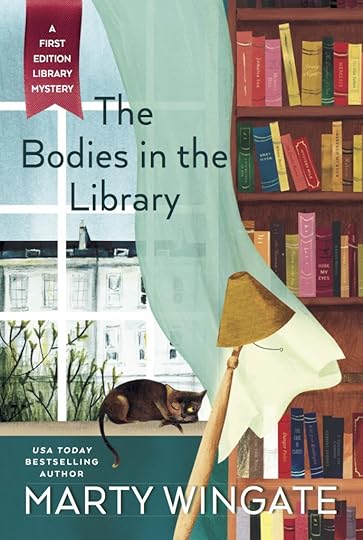
The Bodies in the Libraryis book one in my new series, the First Edition Library mysteries. I love the city of Bath and thought setting a series there would be the perfect excuse to go for that all-important on-the-ground research. But I didn’t want to write about Jane Austen—there are other authors better versed in Jane. Instead, I let my mind wander and came up with the idea of using the Golden Age of Mystery as a springboard for stories set today. I don’t actually steal anyone’s plot line, but merely borrow an idea or two (and give copious credit). So, for book one, The Bodies in the Library, I borrow from Agatha Christie. But all else is different—my main character, Hayley Burke, divorced single mother of a college-aged daughter and curator of the First Edition Library, is no Miss Marple. In fact, she’s never read a detective story in her life.
What are you working on now?
I’ve just recently turned in book two in the series, which has a Dorothy L. Sayers thread running through it. Talk about a snappy writer! After all, this is the woman who penned the legendary advertisement “Guinness is good for you” when she worked for Benson’s, an ad agency in Bloomsbury. She drew on her experience as a copywriter for the highly entertaining Lord Peter Wimsey book, Murder Must Advertisein which the victim dies in a fall down a spiral staircase. I considered giving Hayley a monocle in this one, but couldn’t quite fit it in.
Which question didn’t I ask you that I should have?
Do you drink as much tea as your characters?
Yes.
Ha! I should’ve known that! Thanks, Marty!
USA Today best-selling author Marty Wingate writes three mystery series set in England. The Potting Shed books (Alibi) feature Pru Parke, a middle-aged American gardener transplanted from Texas to England, and the Birds of a Feather series (Alibi) follows Julia Lanchester, bird lover, who runs a tourist office in a Suffolk village. Marty’s newest series—The First Edition Library (Berkley)—presents Hayley Burke, the curator of a collection of books from the Golden Age of Mystery. The Bodies in the Library, book one, will be released October 8, 2019.
Marty prefers on-the-ground research whenever possible, and so she and her husband regularly travel to England and Scotland, where she can be found tracing the steps of her characters, stopping for tea and a slice of Victoria sponge in a café, or enjoying a swift half in a pub.



